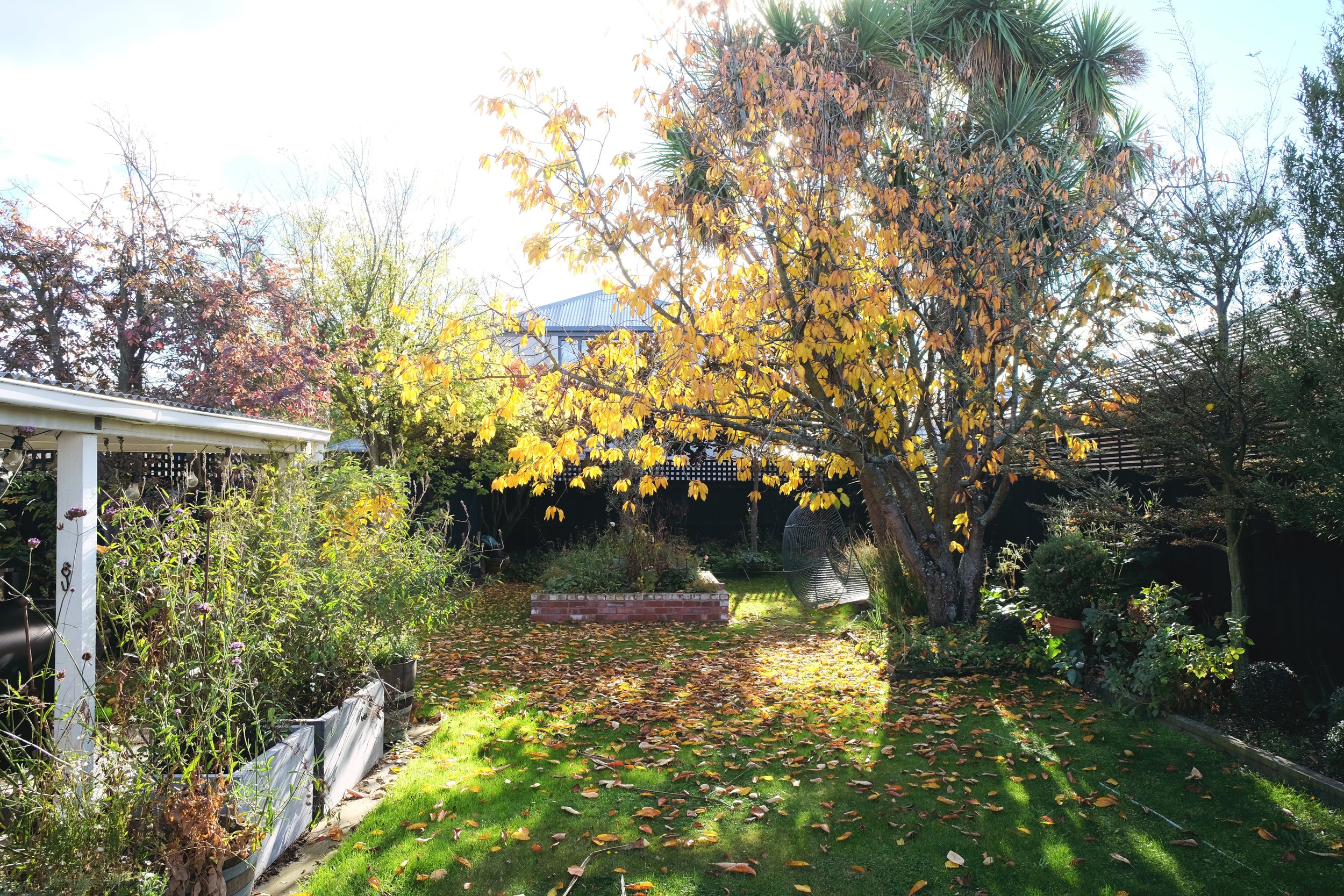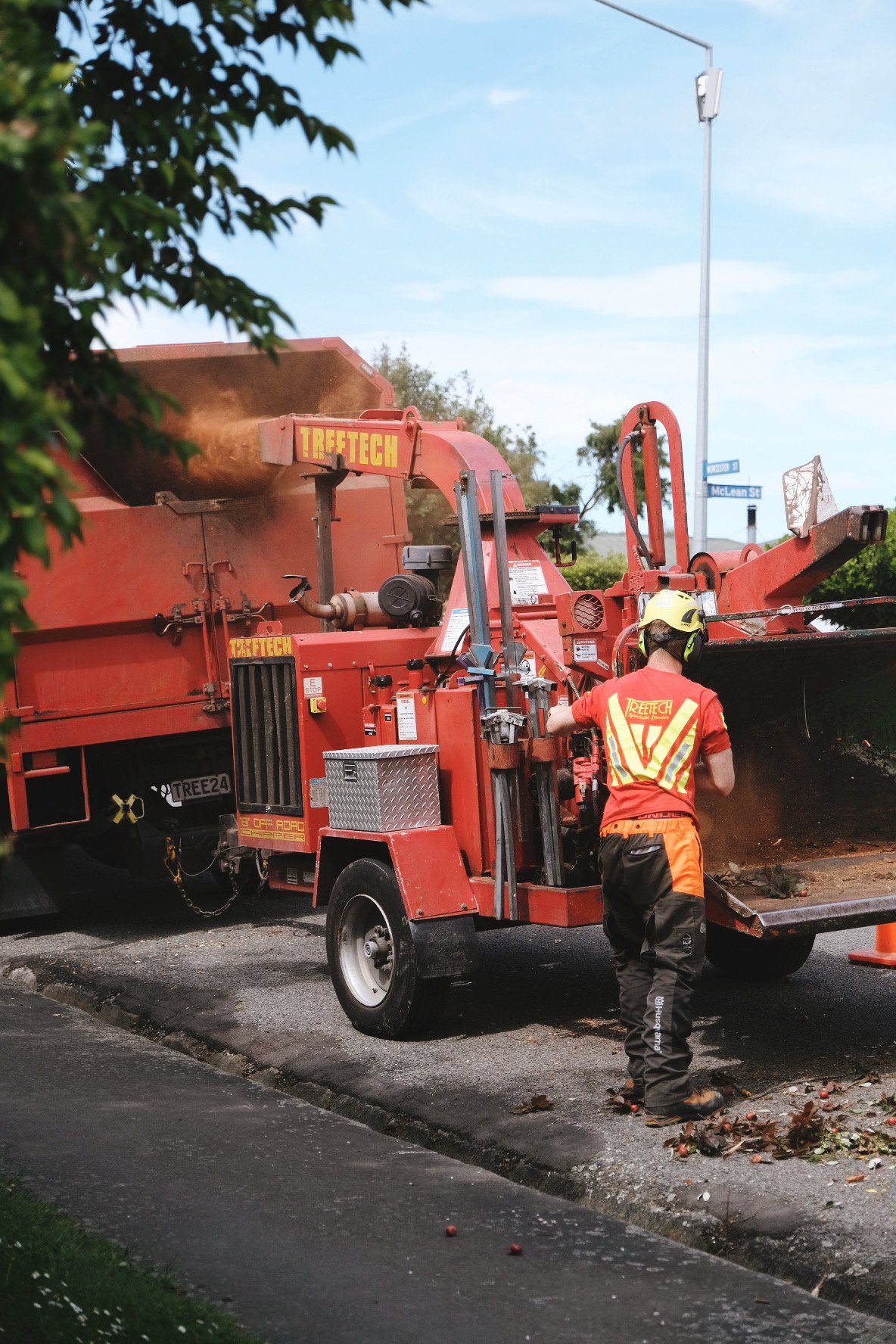Trees and your garden
/Moving to a new property and garden can be as exciting as it is overwhelming. With only a little gardening experience under your belt, it’s easy to walk your inherited borders with an eye for a clean up. Gnarly old trees might look messy and pointless, particularly when viewed in winter, and the urge to clear the section can be hard to resist!
I lived with most of the trees in our garden for 4 years before doing a big cull. I learnt about their blossom, colour and how they affected light in the garden. For example, the large central cherry has had a tidy up but is so valued for its seasonal display and a great place to find a shady spot on the lawn on a hot day. Directly to its right is a native beech tree. This was destined to be huge and it struggled in its spot, planted far too close to other trees. It has since been removed.
Over the years I’ve slowly pulled trees from the background of my interest to the front. My learning and understanding of how they play into a garden environment has increased, mostly due to the deep questioning I force on those with experience. I have learned from my own tree clearing, the pros and cons of losing privacy to gain sunlight and have found a new love of multi-stemmed trees like amelanchiers and even my pruned-up camellia!
A few years ago, I invited Chris Walsh, managing director of Treetech, to join a panel I was running, urging him to share his wealth of knowledge with my interested audience. I will never forget his first and most important piece of advice.
On moving to a new property, he urged homeowners to wait a year before cutting any trees down. This delay allows a chance to see what the trees offer to the section throughout the seasons and gives a full understanding of each one’s value to privacy, shade and aesthetics. Given the many years a tree might take to grow to useful maturity, the knee jerk reaction of removing it without any understanding of its advantages can lead to regret only cured by expense and patience.
As we enter the best period of the year for tree planting, I engaged Chris once again to glean his advice. Below he shares some fantastic takeaways that can save us all from making critical, expensive mistakes.
I protected the life of this old plum tree for years despite its very messy and not very nice fruit. However, on inspection by Chris, he found that it was diseased and this could spread to other trees in the garden.
Before removal, do your research and observe
Before removing any tree, do your research and find out the names of each on your property. Discover their seasonal behaviour, environmental needs and eventual mature height. The ugly tree in the corner that doesn’t appeal to you might also be blocking a direct view from your neighbour’s window. Its looming size in winter might make it feel cold, yet in summer it provides welcome shade for your home or garden. Maybe it is yet to reveal a stunning display of spring blossom or autumn colour that you haven’t witnessed? Or the tree’s form might be sheltering you from strong prevailing winds and its removal might both expose you or create a wind tunnel through those left behind. All in all, a little patience and study will help you avoid mistakes.
Before breaking ground
Before taking spade to ground and popping a friendly looking young tree in your garden, there are a number of factors to consider.
Research your chosen tree’s eventual height and span, avoiding the risk of introducing a monster into your petite space! It’s equally important to consider its canopy and how this might encroach on your neighbours’ property or push at your boundary fence. Is it evergreen or deciduous? Will it drop fruit and leaves over the fence or into your gutters?
Importantly, save yourself further costly mistakes by knowing exactly where services like power, fibre, phone or water pipes are positioned.
While it was sad to lose such a big specimen, this native cabbage tree had precariously split at the base and was threatening our neighbour’s house! It also dropped a huge amount of leaves which couldn’t be composted.
How to choose a tree
To begin with, research options that answer your space, preferred aesthetic and shade needs. Personally, I have found huge benefit in questioning specialist garden centre staff on this.
When selecting a tree from a nursery, look for one with a good strong stem and a nice central leader. You want a tree that isn’t root bound and is clearly labelled. While it’s tempting to pick up discounted trees, usually this means they are old stock or damaged, setting you off to a laboured start.
Planting and maintenance
Once you have a healthy strong specimen of your choosing, prepare a hole that is as deep as the root ball with a little bit of broken soil underneath it. Be sure the hole is a further 30 cm wider all the way around the root ball, then backfilled with soil to allow it a nice pit to start growing.
Once planted, protect the base of the tree with a nice layer of mulch, around 5-10 cm deep, spanning 60 cm out from the trunk. Then hammer in two strong stakes (without hitting the root ball) on either side, securing the trunk between them with a length of webbed tape. After a couple of years, once the tree has established its roots, these can be removed and the tree will continue to grow unsupported.
Over time, trees need to be pruned for health and structure. Chris recommends engaging an NZARB approved contractor to prune the tree in its first 2-3 years to ensure the tree canopy is in the best form to mature, resulting in less pruning costs in the years to come.
Chris’s favourites
It’s always a treat to learn from the experts, so I asked Chris to name some of his favourite trees.
“I love the Fagus sylvatica (Copper Beach), as a tree for large sections. The branch structure is dominant, and the colour is magnificent. The Acacia baileyana ‘Purpurea’ (Cootamundra Wattle) is a nice, fast evergreen growing tree for smaller sections with beautiful foliage and flowers. And you can’t beat a Sophora microphylla (kōwhai) with its bright yellow flowers which attracts native birds.”
Treetech arrived with all the gear and professionalism you would hope for, including this large mulching unit which tidied away branches etc as they were removed.
This is an expanded version of the article featured in my Stuff ‘Homed’ gardening column for beginners , The Press, Dominion Post and other regional papers on June 9th 2022
All words and images are my own, unless otherwise credited.







